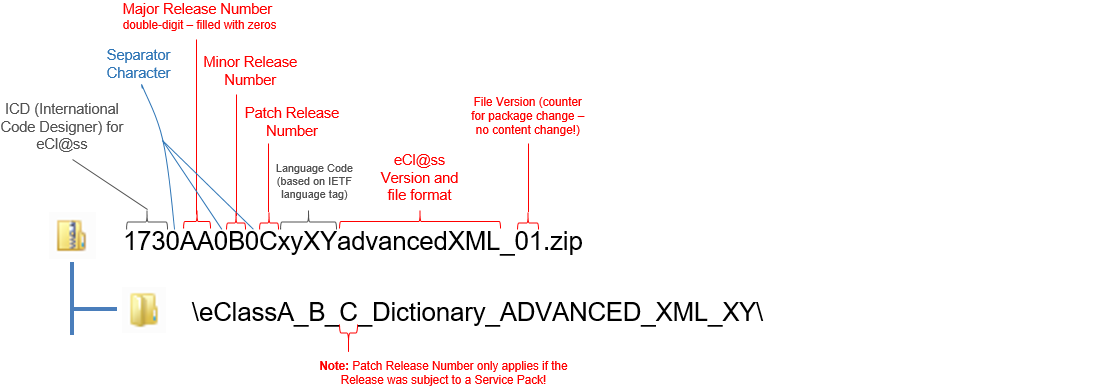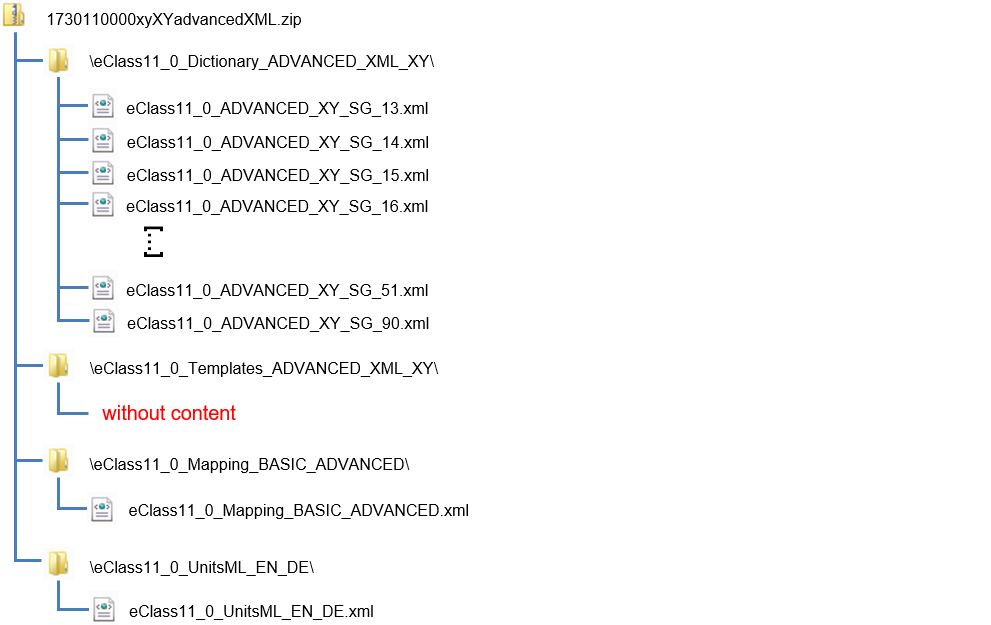Advanced XML
Description of the files
The ZIP-file contains all relevant files for the class structure of ECLASS 10.1 ADVANCED in a specific language ("xy" stands for a language code that is part of the files).
Starting with ECLASS Release 7.0, there are two different versions of ECLASS which contain the same classes, but differ in the product description on the basis of properties and values:
- BASIC (in .csv or .xml format). The BASIC version contains only the content that could be represented in a .csv format that was the exclusively used export format before 7.0. Therefore, it does not contain property block structures nor dynamic elements as in the ADVANCED version. BASIC does contain all classes of the ADVANCED, but the product description with the help of properties and values is structured a lot easier. BASIC is therefore a subset of ADVANCED.
- ADVANCED (in .xml format). The ADVANCED version is the leading version and built on the basis of the data model ISO13584. It contains all structural elements of the ECLASS classification system including property blocks, dynamic elements such as reference properties, polymorphism and cardinality blocks. Each classification class refers to both an ADVANCED and a BASIC application class that contains the product description with the help of properties and values. The ADVANCED version contains the complete ECLASS content.
Format of the data sets
ECLASS XML is an extension of ISO 13584-32 ontoML, with a few optional enhancements. For more details please see: ECLASS XML
- Release 7.0 - 7.1: XML 1.0
- Release 8.0 - 10.1: XML 2.0
- since Release 11.0: XML 3.0
XML-Scheme
The description of the used XML scheme is available here or to be found in ISO_13584-32_ontoML
Content of the data sets
ECLASS Release 10.1 ADVANCED - Language-specific
For each segment one .xml file is included:
- an .xml file that contains the ECLASS dictionary ADVANCED
Note
With Release 10.0.1, the file „Templates“, known from previous releases, does not further comprise any content. The reason for this is the future approach on Templates to only deliver and publish „default“ Templates with substantial content. Of course this can change regarding future releases. Templates contain a Data Requirement Statement for the data exchange, in which e.g. orders, Can and Must areas etc. between data transmitter and recipient can be defined.
More information in the template scheme: here or in Templates
Structure of the data sets

Please note, that
- “xy” stands for a language code
- For further information also see the page ISOLanguageCode
Example: ECLASS Release 11.0

List of all contained files
A complete list of all contained files can be found here